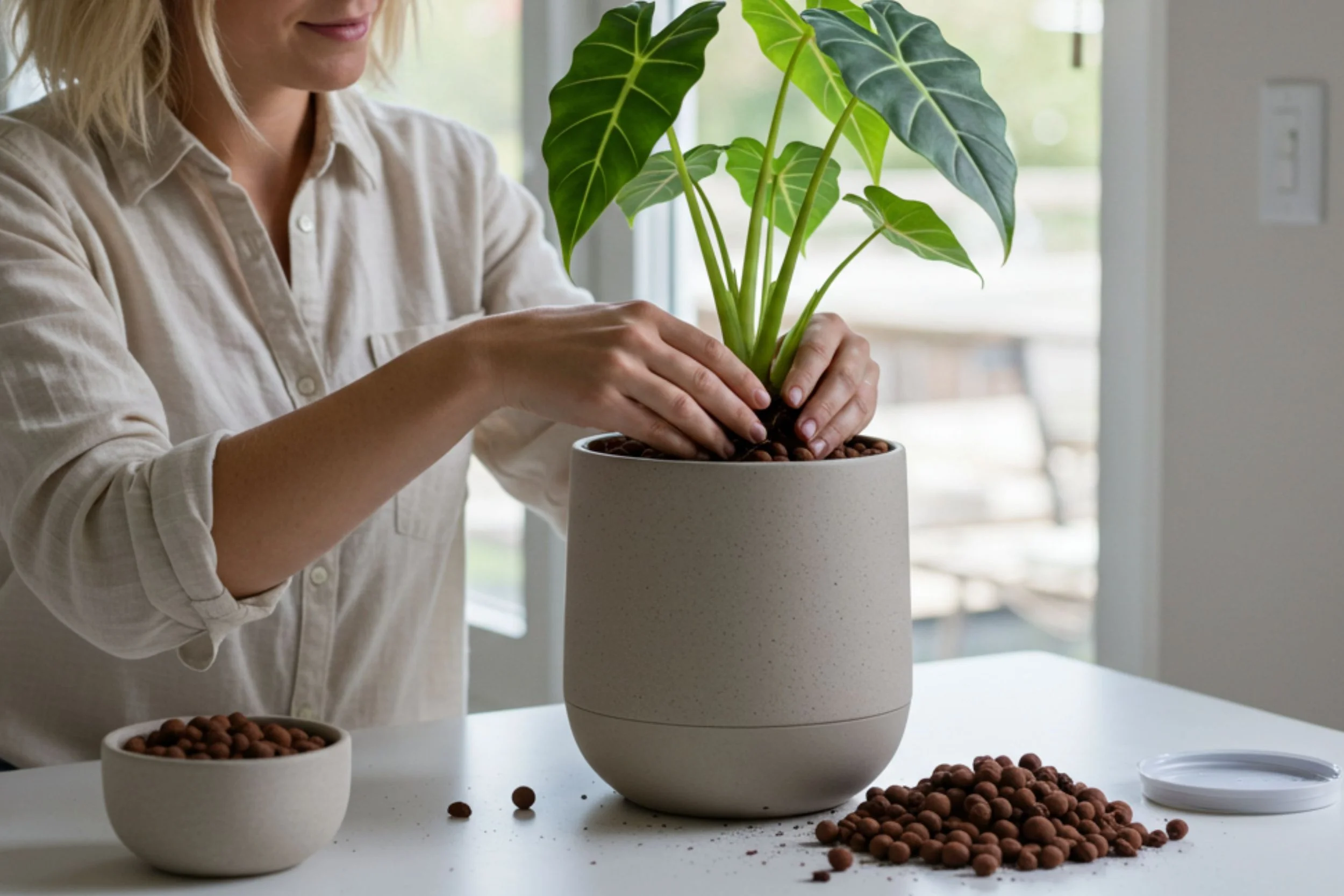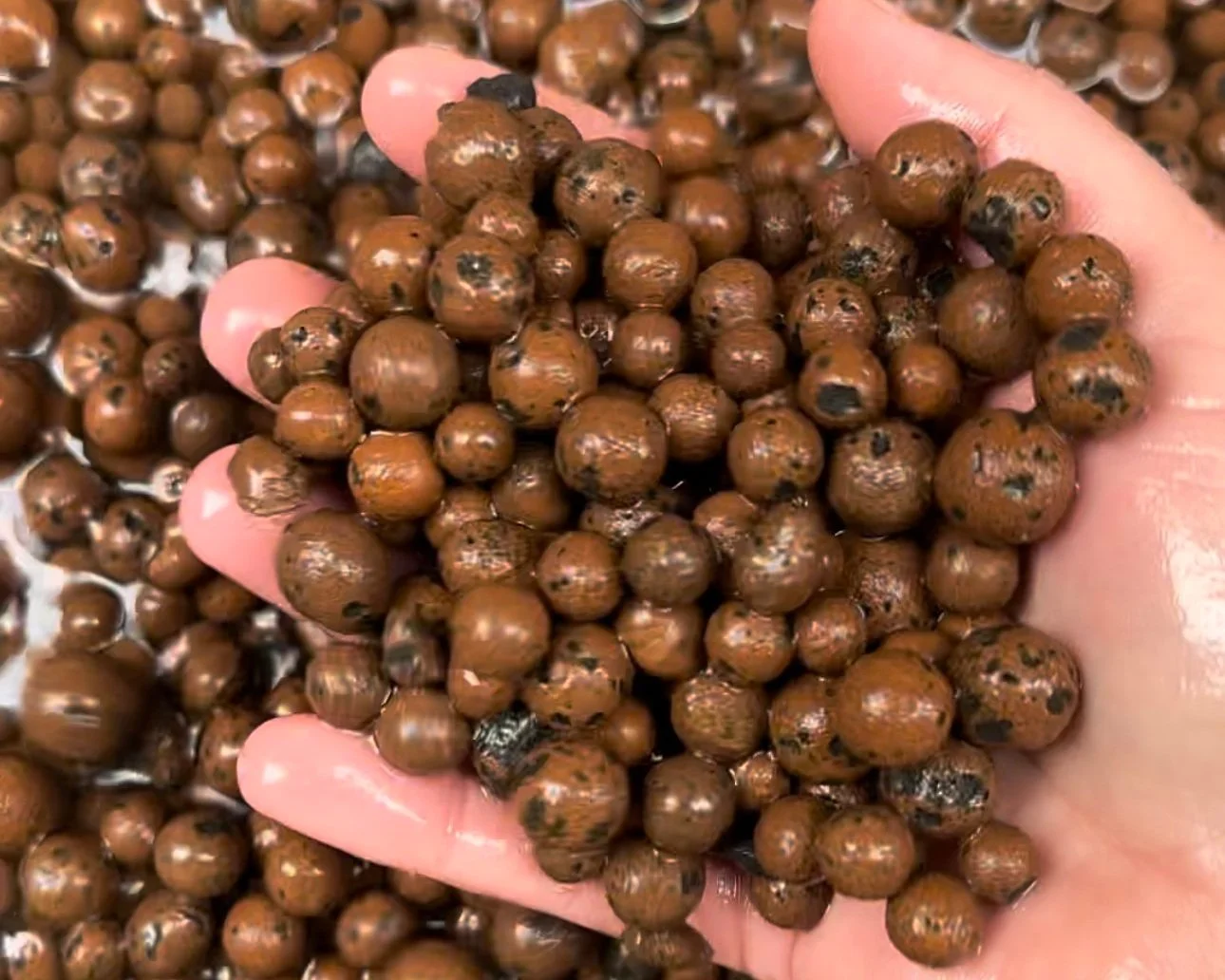The Ultimate Guide to Using LECA for Semi-Hydroponics and Potting Mixes
What is LECA?
LECA, which stands for Lightweight Expanded Clay Aggregate, is a remarkably versatile growing medium that is commonly utilized in semi-hydroponic gardening as well as in potting mixes and various horticultural applications. These small, porous clay pellets are truly a game-changer for both houseplant lovers and tropical plant enthusiasts, as they provide significant benefits, including enhanced aeration, improved water retention, and overall root health. By incorporating LECA into your planting routines, you can ensure that your plants thrive in a healthy environment.
How is LECA Made?
LECA, or Lightweight Expanded Clay Aggregate, is produced through a high-temperature kiln-firing process that transforms raw clay into a highly functional growing medium. Initially, clay is carefully extracted from natural deposits and shaped into small, uniform pellets. These pellets are then subjected to intense heating at approximately 2,000°F (1,100°C). This extreme heat causes the clay to expand and form lightweight, porous spheres, which greatly enhances drainage and aeration. The end result is a stable, pH-neutral, and reusable growing medium that proves to be ideal for semi-hydroponics and soil amendments, making it an excellent choice for both novice and experienced plant enthusiasts alike.
Benefits of Using LECA for Houseplants and Tropical Plants
Excellent Drainage and Aeration
One of the biggest advantages of LECA is its ability to improve drainage and oxygen availability. Traditional soil can become compacted, leading to root rot and fungal issues. LECA’s porous structure prevents waterlogging while ensuring roots have access to the oxygen they need to thrive.
Prevention of Root Rot
LECA is an excellent choice for semi-hydroponic setups because it helps regulate moisture levels. Unlike traditional soil, which can retain too much water, LECA allows plant roots to absorb only what they need, reducing the risk of overwatering and root rot.
pH Neutral & Inert
Unlike some organic potting materials, LECA is pH neutral and does not decompose over time. This stability means you can use it for years without worrying about it breaking down or affecting soil chemistry.
Reusable and Sustainable
LECA is an eco-friendly option since it can be washed and reused multiple times. Unlike traditional soil, which needs periodic replacement, LECA offers a long-lasting, sustainable alternative that reduces waste.
Prevents Pest Issues
Soil is a common breeding ground for pests like fungus gnats. Since LECA does not provide organic matter for these pests to thrive on, switching to semi-hydroponics with LECA can significantly reduce infestations.
Better Nutrient Control
Since LECA doesn’t contain nutrients on its own, you have complete control over the fertilization process. This is especially useful in hydroponic and semi-hydroponic setups where you can tailor nutrient solutions to your plants' specific needs.
How to Use LECA for Semi-Hydroponics
Step 1: Preparing LECA for Use
Proper preparation of LECA is essential for successful semi-hydroponic growing. Follow these steps to ensure your LECA is ready:
Rinse Thoroughly: Begin by rinsing the LECA pellets under warm water to remove dust and debris that can clog roots and reduce efficiency.
Soak in Water: After rinsing, soak the LECA in clean water for 12-24 hours. This step helps the pellets absorb water and prevents them from drawing moisture away from plant roots initially.
Rinse Again: After soaking, rinse the LECA one more time to wash away any remaining debris or residue.
Optional - pH Adjustment: For sensitive plants, consider soaking the LECA in pH-adjusted water (pH 5.5-6.5) for an additional 24 hours.
Following these steps ensures that the LECA is fully saturated and ready to support healthy root growth.
Before using LECA, it must be thoroughly rinsed to remove dust and debris. After rinsing, soak it in water for at least 24 hours to ensure proper hydration. If you don't want to prep LECA yourself, consider checking out pre-rinsed and ready-to-use LECA options, which can make the process much easier.
Step 2: Choose the Right Pot and Setup
Choosing the right pot setup is crucial for successful LECA-based growing. Here are some popular options:
Self-Watering Pots with a Wick: These pots have a wick that draws water from a reservoir into the LECA, keeping the medium evenly moist. This setup is ideal for moisture-loving plants like Alocasia's and reduces the need for frequent watering.
Double-Container System: A plastic nursery pot with holes is placed inside a decorative, water-holding outer pot. The bottom layer of LECA acts as a water reservoir, wicking moisture upward as needed.
Pots Without Drainage Holes: Using LECA in pots without drainage allows for a controlled water reservoir at the bottom, preventing waterlogging while ensuring roots have access to moisture.
Choosing the right setup depends on your plant’s moisture needs and maintenance preferences.
No matter which setup you choose, keep in mind that you need to flush your LECA – so choose the best option that’ll make that easier for you. Having drainage holes plays a big advantage so you don’t have to fully remove the plant. We will talk more about flushing later in the guide.
Step 3: Transplanting Your Plant
If the soil around your plant's roots is hydrophobic and difficult to remove, soak the plant in lukewarm water for a few hours. This helps soften the soil, making it easier to rinse off without damaging the roots. After soaking, gently remove all soil to prevent root rot, paying special attention to crevices where soil can get trapped. Rinse the roots thoroughly under running water until they are completely free of soil.
Optional: You can trim the roots to make them more manageable. This is especially helpful since soil roots will often die back over the next week or so as they transition to water roots in the LECA environment. Trim any rotting, dead, or excessively long roots, being careful to leave enough healthy root mass for recovery.
Place a layer of LECA at the bottom of the pot, position the plant in the center, and fill in the gaps with more LECA.
Step 4: Watering and Fertilization
Since LECA is an inert medium with no nutrients of its own, using a diluted hydroponic nutrient solution is essential for plant health. Opt for a balanced fertilizer designed for hydroponics that includes all essential macro and micronutrients, such as nitrogen, phosphorus, potassium, calcium, magnesium, and trace elements.
Mixing Nutrient Solution: Dilute the fertilizer to about 25-50% of the recommended strength for soil-grown plants, as hydroponic setups allow for more efficient nutrient uptake.
Frequency: Refresh the water and nutrient solution every one to two weeks to prevent salt buildup and nutrient imbalances. Monitor the pH of the solution, keeping it between 5.5 and 6.5 for most tropical houseplants.
By maintaining a proper nutrient balance, you can support healthy growth and prevent common deficiencies in your LECA setup.
Using LECA in Potting Mixes and Self-Watering Pots
LECA can also be a valuable addition to traditional potting mixes, improving aeration and drainage for tropical plants. Additionally, it can be used as a drainage layer in potting mediums or in a self-watering pot setup. By filling the bottom of the pot with LECA and maintaining a water reservoir at the LECA line, moisture can be wicked up to the potting mix, keeping it evenly moist for longer periods. This method is particularly useful for moisture-loving plants and helps reduce the frequency of watering.
How to Incorporate LECA into Potting Mix
For Tropical Plants: Mix LECA with Coco Chips, perlite, and BioChar in a 20-30% ratio to enhance aeration and moisture control. LECA aids in preventing root rot by diverting excess water away from the roots while retaining humidity. Consider this Soilless Potting Mix as a pre-made option that includes LECA for your convenience.
For Orchids and Epiphytic Plants: Use a mix of LECA, orchid bark, and sphagnum moss to provide excellent drainage while retaining adequate moisture for orchid roots. The LECA helps prevent waterlogging and increases airflow to the roots, reducing the risk of root rot. Consider this Orchid Mix as a pre-made option that includes LECA.
For Moisture-loving Plants: Combine LECA with coco coir, perlite and vermiculite to create a balanced mix that retains moisture while avoiding compaction. LECA's wicking ability helps keep the soil consistently moist without becoming waterlogged. For a pre-made option, checkout this Thirty Plant Mix which also incorporates LECA.
Can You Use LECA for Outdoor Gardening?
Yes! LECA is an excellent addition to outdoor gardening applications. It improves soil drainage in garden beds, aerates compacted soils, and can be used in raised beds or hydroponic vegetable systems. The porous structure of LECA also helps retain moisture without waterlogging the roots, making it beneficial for drought-prone areas. Additionally, it reduces soil compaction, enhances root development, and minimizes the risk of root rot in outdoor settings.
LECA Size Variations and Choosing the Right Type
LECA comes in various pellet sizes, and selecting the right one depends on the type of plant you are growing and your chosen setup.
Small-sized LECA (4-8mm): Ideal for plants with delicate root systems, such as orchids and young seedlings. Smaller pellets provide more surface area for root attachment and better moisture retention.
Medium-sized LECA (8-16mm): A versatile option suitable for most houseplants, including pothos, monsteras, and philodendrons. Medium LECA balances water retention and aeration, making it a popular choice.
Large-sized LECA (16-25mm): Best for larger plants or those that require enhanced aeration, such as palms or mature tropical plants. Larger pellets improve airflow around roots, preventing compaction.
Choosing the appropriate size ensures optimal root support, water retention, and airflow for your plants, enhancing overall growth and reducing risks of root rot.
Common Questions About LECA
Does LECA Need to Be Replaced?
No, LECA can be reused indefinitely as long as it is properly cleaned between uses. To sterilize LECA, soak it in a solution of hydrogen peroxide or diluted bleach (1 part bleach to 10 parts water) for at least 30 minutes, then rinse thoroughly with clean water. Boiling the LECA for 10-15 minutes is another effective sterilization method.
Flushing LECA and How Often to Do It
Flushing LECA is essential to remove built-up salts and mineral deposits from fertilizers. It is recommended to flush the LECA with clean, pH-balanced water every 2-4 weeks, depending on your fertilization schedule. Simply run fresh water through the LECA until excess nutrients are washed away, ensuring healthier plant growth.
Can Any Plant Be Grown in LECA?
While many tropical plants thrive in LECA, some species with very fine root systems may not transition as easily. It is best suited for plants like Orchids, Monsteras, Philodendrons, Alocasia, Calatheas, and Anthuriums.
Do I Need to Fertilize When Using LECA?
Yes, since LECA is an inert medium, plants will require hydroponic nutrients or diluted liquid fertilizers to thrive.
In summary
LECA is a fantastic growing medium for houseplants and tropical plants, offering superior drainage, aeration, and moisture control. Whether you want to transition to semi-hydroponics or enhance your traditional potting mix, LECA provides a sustainable, reusable, and plant-friendly solution. By understanding how to properly use LECA, you can create a healthier environment for your plants while simplifying watering and reducing common plant problems.











